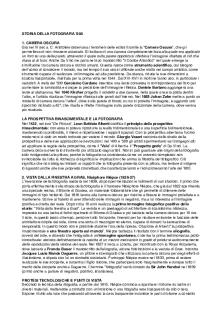NIST SP 800 60 SECURITY categories FOR INF PDF

| Title | NIST SP 800 60 SECURITY categories FOR INF |
|---|---|
| Course | Public issues |
| Institution | Western Governors University |
| Pages | 53 |
| File Size | 1.2 MB |
| File Type | |
| Total Downloads | 22 |
| Total Views | 124 |
Summary
Publications FOR process of getting your ATO
just follow this guide it will help
Categorize info systems
select controls
implement controls...
Description
NIST Special Publication 800-60 Volume I Revision 1
Volume I: Guide for Mapping Types of Information and Information Systems to Security Categories Kevin Stine Rich Kissel William C. Barker Jim Fahlsing Jessica Gulick
INFORMATION
SECURITY
Computer Security Division Information Technology Laboratory National Institute of Standards and Technology Gaithersburg, MD 20899-8930
August 2008
U.S. DEPARTMENT OF COMMERCE Carlos M. Gutierrez, Secretary
NATIONAL INSTITUTE OF STANDARDS AND TECHNOLOGY James M. Turner, Deputy Director
Reports on Computer Systems Technology The Information Technology Laboratory (ITL) at the National Institute of Standards and Technology (NIST) promotes the U.S. economy and public welfare by providing technical leadership for the nation’s measurement and standards infrastructure. ITL develops tests, test methods, reference data, proof-of-concept implementations, and technical analyses to advance the development and productive use of information technology. ITL’s responsibilities include the development of management, administrative, technical, and physical standards and guidelines for the cost-effective security and privacy of other than national security-related information in federal information systems. This Special Publication 800-series reports on ITL’s research, guidelines, and outreach efforts in information system security and its collaborative activities with industry, government, and academic organizations.
ii
Authority This document has been developed by the National Institute of Standards and Technology (NIST) to further its statutory responsibilities under the Federal Information Security Management Act (FISMA) of 2002, P.L. 107-347. NIST is responsible for developing standards and guidelines, including minimum requirements, for providing adequate information security for all agency operations and assets but such standards and guidelines shall not apply to national security systems. This guideline is consistent with the requirements of the Office of Management and Budget (OMB) Circular A-130, Section 8b(3), Securing Agency Information Systems, as analyzed in A-130, Appendix IV: Analysis of Key Sections. Supplemental information is provided in A-130, Appendix III. This guideline has been prepared for use by federal agencies. It may also be used by nongovernmental organizations on a voluntary basis and is not subject to copyright. (Attribution would be appreciated by NIST.) Nothing in this document should be taken to contradict standards and guidelines made mandatory and binding on federal agencies by the Secretary of Commerce under statutory authority. Nor should these guidelines be interpreted as altering or superseding the existing authorities of the Secretary of Commerce, Director of the OMB, or any other federal official. NIST Special Publication 800-60 Volume I, Revision 1, 53 pages
(Date) CODEN: NSPUE2 Certain commercial entities, equipment, or materials may be identified in this document in order to describe an experimental procedure or concept adequately. Such identification is not intended to imply recommendation or endorsement by the National Institute of Standards and Technology, nor is it intended to imply that the entities, materials, or equipment are necessarily the best available for the purpose. There are references in this publication to documents currently under development by NIST in accordance with responsibilities assigned to NIST under the Federal Information Security Management Act of 2002. The methodologies in this document may be used even before the completion of such companion documents. Thus, until such time as each document is completed, current requirements, guidelines, and procedures (where they exist) remain operative. For planning and transition purposes, agencies may wish to closely follow the development of these new documents by NIST. Individuals are also encouraged to review the public draft documents and offer their comments to NIST. All NIST documents mentioned in this publication, other than the ones noted above, are available at http://csrc.nist.gov/publications.
COMMENTS MAY BE SUBMITTED TO THE COMPUTER SECURITY DIVISION, INFORMATION TECHNOLOGY LABORATORY, NIST VIA ELECTRONIC MAIL AT [email protected] OR VIA REGULAR MAIL AT 100 BUREAU DRIVE (MAIL STOP 8930), GAITHERSBURG, MD 20899-8930
iii
Acknowledgements The authors, Kevin Stine, Rich Kissel, and William C. Barker, wish to thank their colleagues, Jim Fahlsing and Jessica Gulick from Science Applications International Corporation (SAIC), who helped update this document, prepare drafts, and review materials. In addition, special thanks are due to our reviewers, Arnold Johnson (NIST), Karen Quigg (Mitre Corporation), and Ruth Bandler (Food and Drug Administration), who greatly contributed to the document’s development. A special note of thanks goes to Elizabeth Lennon for her superb technical editing and administrative support. NIST also gratefully acknowledges and appreciates the many contributions from individuals in the public and private sectors whose thoughtful and constructive comments improved the quality and usefulness of this publication.
iv
Volume I: Guide for Mapping Types of Information and Information Systems to Security Categories Table of Contents EXECUTIVE SUMMARY ......................................................................................................... VII 1.0
INTRODUCTION ..................................................................................................................1
1.1
Purpose and Applicability ......................................................................................................1
1.2
Target Audience .....................................................................................................................1
1.3
Relationship to Other Documents ..........................................................................................1
1.4
Organization of this Special Publication ................................................................................2
2.0
PUBLICATION OVERVIEW ...............................................................................................4
2.1
Agencies Support the Security Categorization Process .........................................................4
2.2
Value to Agency Missions, Security Programs and IT Management ....................................4
2.3
Role in the System Development Lifecycle ...........................................................................5
2.4
Role in the Certification and Accreditation Process ..............................................................5
2.5
Role in the NIST Risk Management Framework ...................................................................6
3.0
SECURITY CATEGORIZATION OF INFORMATION AND INFORMATION SYSTEMS ..............................................................................................................................9
3.1
Security Categories and Objectives........................................................................................9
3.1.1 3.1.2
Security Categories ........................................................................................................9 Security Objectives and Types of Potential Losses .......................................................9
3.2
Impact Assessment ...............................................................................................................10
4.0
ASSIGNMENT OF IMPACT LEVELS AND SECURITY CATEGORIZATION ............12
4.1
Step 1: Identify Information Types ......................................................................................14
4.1.1 4.1.2 4.1.3 4.1.4 4.2
Identification of Mission-based Information Types ....................................................14 Identification of Management and Support Information .............................................16 Legislative and Executive Information Mandates .......................................................18 Identifying Information Types Not Listed in this Guideline .......................................18
Step 2: Select Provisional Impact Level ..............................................................................19
4.2.1 4.2.2 4.2.3
FIPS 199 Security Categorization Criteria ..................................................................19 Common Factors for Selection of Impact Levels ........................................................20 Examples of FIPS 199-Based Selection of Impact Levels ..........................................22
v
4.3 Step 3: Review Provisional Impact Levels and Adjust/Finalize Information Type Impact Levels.............................................................................................................................................23 4.4
Step 4: Assign System Security Category ............................................................................24
4.4.1 4.4.2 4.4.3
FIPS 199 Process for System Security Categorization ................................................25 Guidelines for System Categorization .........................................................................26 Overall Information System Impact.............................................................................30
4.5
Documenting the Security Categorization Process ..............................................................31
4.6
Uses of Categorization Information .....................................................................................33
APPENDIX A: GLOSSARY OF TERMS .....................................................................................1 APPENDIX B: REFERENCES......................................................................................................1
vi
EXECUTIVE SUMMARY Title III of the E-Government Act (Public Law 107-347), titled the Federal Information Security Management Act (FISMA), tasked the National Institute of Standards and Technology (NIST) to develop: •
Standards to be used by all Federal agencies to categorize all information and information systems collected or maintained by or on behalf of each agency based on the objectives of providing appropriate levels of information security according to a range of risk levels;
•
Guidelines recommending the types of information and information systems to be included in each such category; and
•
Minimum information security requirements (i.e., management, operational, and technical security controls), for information and information systems in each such category.
In response to the second of these tasks, this guideline has been developed to assist Federal government agencies to categorize information and information systems. The guideline’s objective is to facilitate application of appropriate levels of information security according to a range of levels of impact or consequences that might result from the unauthorized disclosure, modification, or use of the information or information system. This guideline assumes that the user is familiar with Standards for Security Categorization of Federal Information and Information Systems (Federal Information Processing Standard [FIPS] 199). The guideline and its appendices: •
Review the security categorization terms and definitions established by FIPS 199;
•
Recommend a security categorization process;
•
Describe a methodology for identifying types of Federal information and information systems;
•
Suggest provisional1 security impact levels for common information types;
•
Discuss information attributes that may result in variances from the provisional impact level assignment; and
•
Describe how to establish a system security categorization based on the system’s use, connectivity, and aggregate information content.
This document is intended as a reference resource rather than as a tutorial and not all of the material will be relevant to all agencies. This document includes two volumes, a basic guideline and a volume of appendices. Users should review the guidelines provided in Volume I, then refer to only that specific material from the appendices that applies to their own systems and applications. The provisional impact assignments are provided in Volume II, Appendix C and D. The basis employed in this guideline for the identification of information types is the Office of
1
Provisional security impact levels are the initial or conditional impact determinations made until all considerations are fully reviewed, analyzed, and accepted in the subsequent categorization steps by appropriate officials.
vii
Management and Budget’s Federal Enterprise Architecture (FEA) Program Management Office (PMO) October 2007 publication, The Consolidated Reference Model Document Version 2.3.
viii
1.0 INTRODUCTION The identification of information processed on an information system is essential to the proper selection of security controls and ensuring the confidentiality, integrity, and availability of the system and its information. The National Institute of Standards and Technology (NIST) Special Publication (SP) 800-60 has been developed to assist Federal government agencies to categorize information and information systems.
1.1 Purpose and Applicability NIST SP 800-60 addresses the FISMA direction to develop guidelines recommending the types of information and information systems to be included in each category of potential security impact. This guideline is intended to help agencies consistently map security impact levels to types of: (i) information (e.g., privacy, medical, proprietary, financial, contractor sensitive, trade secret, investigation); and (ii) information systems (e.g., mission critical, mission support, administrative). This guideline applies to all Federal information systems other than national security systems. National security systems store, process, or communicate national security information.2
1.2 Target Audience This publication is intended to serve a diverse federal audience of information system and information security professionals including: (i) individuals with information system and information security management and oversight responsibilities (e.g., chief information officers, senior agency information security officers, authorizing officials); (ii) organizational officials having a vested interest in the accomplishment of organizational missions (e.g., mission and business area owners, information owners); (iii) individuals with information system development responsibilities (e.g., program and project managers, information system developers); and (iv) individuals with information security implementation and operational responsibilities (e.g., information system owners, information owners, information system security officers).
1.3 Relationship to Other Documents NIST Special Publication (SP) 800-60 is a member of the NIST family of security-related publications including: •
FIPS Publication 199, Standards for Security Categorization of Federal Information and Information Systems;
•
FIPS Publication 200, Minimum Security Requirements for Federal Information and Information Systems;
2
FISMA defines a national security system as any information system (including telecommunications system) used or operated by an agency or by a contractor on behalf of an agency, or any other organization on behalf of an agency – (i) the function, operation, or use of which: involves intelligence activities; involves cryptologic activities related to national security; involves command and control of military forces; involves equipment that is an integral part of a weapon or weapon system; or is critical to the direct fulfillment of military or intelligence missions (excluding a routine administrative or business system used for applications such as payroll, finance, logistics, and personnel management); or (ii) that processes classified information. [See Public Law 107-347, Section 3542 (b)(2)(A).]
1
•
NIST SP 800-30, Risk Management Guide for Information Technology Systems; 3
•
NIST SP 800-37, Guide for the Security Certification and Accreditation of Federal Information Systems;
•
NIST Draft SP 800-39, Managing Risk from Information Systems: An Organization Perspective;
•
NIST SP 800-53, Recommended Security Controls for Federal Information Systems;
•
NIST SP 800-53A, Guide for Assessing the Security Controls in Federal Information Systems; and
•
NIST SP 800-59, Guideline for Identifying an Information System as a National Security System.
This series of nine documents is intended to provide a structured, yet flexible framework for selecting, specifying, employing, evaluating, and monitoring the security controls in Federal information systems—and thus, makes a significant contribution toward satisfying the requirements of the Federal Information Security Management Act (FISMA) of 2002. While the publications are mutually reinforcing and have some dependencies, in most cases, they can be effectively used independently of one another. The SP 800-60 information types and associated security impact levels are based on the Office of Management and Budget (OMB) Federal Enterprise Architecture Program Management Office’s October 2007 FEA Consolidated Reference Model Document, Version 2.3, inputs from participants in previous NIST SP 800-60 workshops, and FIPS 199. Rationale for the example impact-level recommendations provided in the appendices has been derived from multiple sources and, as such, will require several iterations of review, comment, and subsequent modification to achieve consistency in terminology, structure, and content.
1.4 Organization of this Special Publication This is Volume I of two volumes. It contains the basic guidelines for mapping types of information and information systems to security categories. The appendices, including security categorization recommendations for mission-based information types and rationale for security categorization recommendations, are published as a separate Volume II. Volume I provides the following background information and mapping guidelines: •
Section 2: Provides an overview of the value of the categorization process to agency missions, security programs and overall information technology (IT) management and the publication’s role in the system development lifecycle, the certification and accreditation process, and the NIST Risk Management Framework.
•
Section 3: Provides the security objectives and corresponding security impact levels identified in the Federal Information Processing Standard 199, Standards for Security Categorization of Federal Information and Information Systems [FIPS 199];
3
This document is currently under revision and will be reissued as Special Publication 800-30, Revision 1, Guide for Conducting Risk Assessments.
2
•
Section 4: Identifies the process including guidelines for identification of mission-based and management and support i...
Similar Free PDFs

NIST Special Publication 800-50
- 70 Pages

Inf - inf
- 3 Pages

NIA-800 - NIA-800
- 18 Pages

Tableau Assignment for Acctg 800
- 15 Pages

Competency Categories
- 2 Pages

NIST Handbook 2019
- 13 Pages

Misrep - categories (cases)
- 7 Pages

NIST SI - Ejercicios resueltos
- 90 Pages

Sp
- Pages

EKG 6 Categories Rhythms
- 32 Pages

Fotografia 800
- 24 Pages
Popular Institutions
- Tinajero National High School - Annex
- Politeknik Caltex Riau
- Yokohama City University
- SGT University
- University of Al-Qadisiyah
- Divine Word College of Vigan
- Techniek College Rotterdam
- Universidade de Santiago
- Universiti Teknologi MARA Cawangan Johor Kampus Pasir Gudang
- Poltekkes Kemenkes Yogyakarta
- Baguio City National High School
- Colegio san marcos
- preparatoria uno
- Centro de Bachillerato Tecnológico Industrial y de Servicios No. 107
- Dalian Maritime University
- Quang Trung Secondary School
- Colegio Tecnológico en Informática
- Corporación Regional de Educación Superior
- Grupo CEDVA
- Dar Al Uloom University
- Centro de Estudios Preuniversitarios de la Universidad Nacional de Ingeniería
- 上智大学
- Aakash International School, Nuna Majara
- San Felipe Neri Catholic School
- Kang Chiao International School - New Taipei City
- Misamis Occidental National High School
- Institución Educativa Escuela Normal Juan Ladrilleros
- Kolehiyo ng Pantukan
- Batanes State College
- Instituto Continental
- Sekolah Menengah Kejuruan Kesehatan Kaltara (Tarakan)
- Colegio de La Inmaculada Concepcion - Cebu




